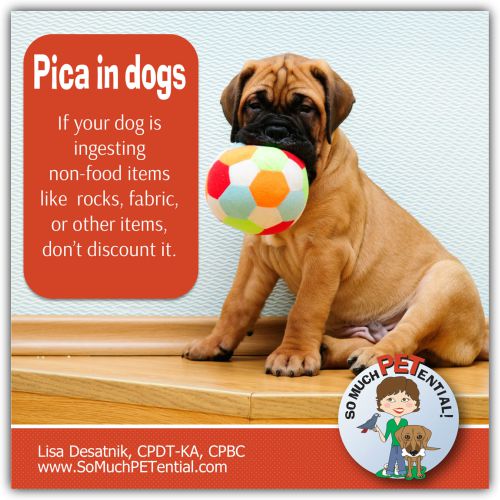
On the other hand, I couldn’t find any references that included grass eating as pica, although clearly it’s not food, at least to a dog. However, eating feces (coprophagia) is not considered by most to be an example of pica, no doubt in acknowledgement that most dogs love the stuff, sometimes including their own, and that is often might have some food value in it. Dogs have also been known to eat marbles, pencils, linoleum, jewelry and, of course, underwear. (Also true for cats– see wool sucking.) Rocks are one example, as is metal, plastic, and cloth. But there are a lot of substances that dogs can become fixated on that can cause them harm. Animals whose name in Navajo is “eater of horse poop” can hardly be diagnosed with a serious behavioral or medical problem if they inherently define much of the world as food, including sunflower seed shells, cat poop and vomit. This isn’t too difficult to diagnose in people, but gets a bit trickier in dogs. Pica refers to the ingestion of non-food items, often with an assumed compulsive component to it.


The vet had already done three surgeries to remove them, and said there was too much scar tissue to attempt another. I saw one dog who lived by a rocky outcropping, and ate rocks compulsively.

It’s not often that a photograph motivates a topic for the blog, but when friend and colleague Melissa McCue-McGrath sent me this image of her dog Captain, along with a suggestion to write a post on pica, how could I resist? In spite of the amusing photo (no, Captain didn’t really drink any booze), pica can be a serious problem.


 0 kommentar(er)
0 kommentar(er)
